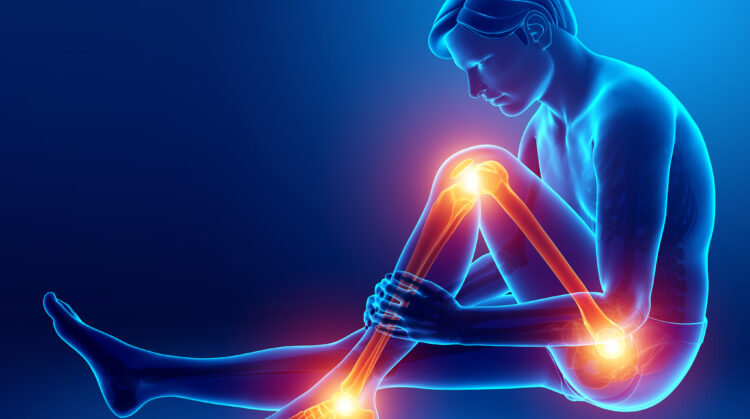
Total knee replacement (TKR) is one of the most successful orthopedic surgeries, offering long-term relief from chronic knee pain and improving mobility. However, many patients report experiencing hip pain after knee replacement, leading to an important question — can knee replacement cause hip pain?
According to Dr. Aashish Arbat, a renowned Orthopedic Doctor in Pune and one of the leading Knee Replacement Surgeons in Pune, hip pain after knee replacement is not uncommon and can result from several interconnected factors. Understanding why this happens and how to manage it effectively is key to ensuring full recovery and lasting comfort after surgery.
Why Does Hip Pain Occur After Knee Replacement?
The knee and hip joints are part of the same kinetic chain, meaning they work together during movement. When one joint undergoes surgery or experiences dysfunction, the other often compensates — sometimes resulting in additional pain or strain.
Here are some possible explanations of why knee replacement can cause hip pain:
- Altered Body Mechanics
Before knee surgery, patients may have developed a compensatory gait or posture to reduce knee pain. After surgery, the new joint alignment can suddenly shift the body’s mechanics, placing unexpected stress on the hip. - Weak Muscles and Imbalance
Post-surgery, the surrounding muscles — especially the gluteal, quadriceps, and core muscles — may be weak. This muscular imbalance can lead to hip pain after knee replacement or even opposite hip pain after knee replacement. - Nerve Irritation or Sciatica
The surgical process and recovery positioning can sometimes irritate the sciatic nerve, leading to lower back and hip pain after TKR or even sciatica pain after knee replacement. - Hip Bursitis or Inflammation
Excessive strain or improper rehabilitation can inflame the bursae (fluid-filled sacs) around the hip joint, causing hip bursitis after total knee replacement. - Underlying Degeneration
In some cases, patients already have early hip arthritis or spine degeneration that becomes more noticeable after the knee pain subsides.
What Helps Hip Pain After Total Knee Replacement?
If you’re experiencing hip pain after total knee replacement, the good news is that most cases can be managed with targeted therapies, exercises, and professional guidance.
Here’s what helps relieve the discomfort:
-
Guided Physiotherapy
Post-operative physiotherapy plays a vital role in restoring balance between the hip and knee joints. A physiotherapist can design a personalized rehabilitation plan focusing on posture correction, strengthening, and flexibility.
-
Hot and Cold Therapy
Alternating heat and cold packs can reduce inflammation and improve blood flow in the hip region, easing pain.
-
Anti-Inflammatory Medications
Under your doctor’s supervision, short-term use of NSAIDs (nonsteroidal anti-inflammatory drugs) can help relieve hip pain caused by inflammation or muscle strain.
-
Correcting Walking Pattern
After surgery, walking with improper gait or uneven weight distribution can worsen hip discomfort. Using a cane or walker initially can prevent undue strain on the hips.
-
Regular Checkups with Your Orthopedic Doctor
Persistent or worsening pain should never be ignored. Consulting an expert like Dr. Aashish Arbat, an experienced Knee Replacement Doctor in Pune, ensures that any underlying mechanical or structural issue is identified and treated early.
Exercises for Hip Pain After Knee Replacement
Performing gentle yet effective exercises helps restore alignment, strengthen supporting muscles, and reduce pressure on the hip joint. Here are some commonly recommended movements (only after your surgeon approves them):
- Glute Bridges – Strengthens the hip and lower back muscles.
- Clamshells – Activates the gluteus medius and helps stabilize the hip.
- Seated Leg Raises – Improves quadriceps strength without straining the knee.
- Pelvic Tilts – Relieves tension in the lower back and improves posture.
- Gentle Hip Stretches – Enhances flexibility and reduces tightness.
When performed under supervision, these exercises for hip pain after knee replacement can significantly improve overall recovery and mobility.
Opposite Hip Pain After Knee Replacement
It’s not uncommon for patients to experience opposite hip pain after knee replacement. This occurs because during recovery, patients tend to rely more on the non-operated leg, putting additional pressure on the opposite hip and lower back.
To prevent or manage this:
- Alternate resting positions frequently.
- Use assistive walking devices temporarily.
- Perform balanced strengthening exercises for both sides.
- Avoid sitting or standing for long periods on one leg.
Consulting an experienced Orthopedic Doctor in Pune like Dr. Aashish Arbat can help you identify whether the pain is mechanical, muscular, or nerve-related, ensuring proper treatment.
Lower Back and Hip Pain After TKR
Lower back and hip pain after total knee replacement (TKR) can be interlinked. Changes in joint alignment and posture during recovery often stress the spine and pelvic muscles. In addition, prolonged sitting or lying during recovery can tighten the hip flexors and cause back discomfort.
How to Relieve Back Pain After Knee Surgery
- Maintain Proper Posture – Avoid slouching while sitting.
- Strengthen Core Muscles – Helps stabilize the spine.
- Stretch the Lower Back – Gentle yoga or physiotherapy-based stretching can help.
- Use Lumbar Support – A small cushion behind your lower back can ease pressure.
- Avoid Sleeping on the Operated Side – This can prevent uneven stress on the hips and back.
By following these tips, you can significantly minimize back and hip pain after knee surgery.
For more info about this, you might refer reading: How to Relieve Back Pain After Knee Surgery
What Helps Sciatica Pain After Knee Replacement
Sciatica pain after knee replacement occurs when the sciatic nerve is irritated due to changes in posture, muscle tightness, or spinal alignment during recovery. Symptoms include radiating pain, tingling, or numbness from the lower back down to the leg.
Relief Measures Include:
- Gentle stretching of the hamstrings and piriformis muscles.
- Heat therapy to relax muscles.
- Avoid prolonged sitting, especially on soft couches.
- Consult a spine and orthopedic specialist if symptoms persist.
Dr. Aashish Arbat, a leading Knee Replacement Surgeon in Pune, emphasizes that early diagnosis of nerve-related pain can prevent chronic discomfort and improve quality of life.
Hip Bursitis After Total Knee Replacement
When the bursae around the hip joint become inflamed, patients may experience localized tenderness or swelling — a condition known as hip bursitis after total knee replacement.
How to Manage Hip Bursitis:
- Apply ice packs to reduce swelling.
- Avoid lying on the affected side.
- Perform gentle hip stretches.
- Seek medical evaluation to rule out infection or severe inflammation.
In some cases, your Orthopedic Doctor in Pune may recommend ultrasound therapy or corticosteroid injections to ease persistent inflammation.
Hip Pain a Year After Knee Replacement
Experiencing hip pain a year after knee replacement can be concerning, especially if your knee has healed well. This may occur due to age-related wear and tear, progression of arthritis in nearby joints, or lumbar spine issues.
A comprehensive evaluation from an expert like Dr. Aashish Arbat, an experienced Knee Replacement Doctor in Pune, can determine whether the pain originates from the hip, spine, or postural imbalances.
When to Consult an Orthopedic Doctor
If you notice persistent hip pain that interferes with walking, sleep, or daily activities even months after surgery, it’s crucial to seek professional guidance. A skilled Knee Replacement Surgeon in Pune can perform diagnostic imaging and suggest corrective physiotherapy, medications, or other interventions tailored to your condition.
Additional Reading: Exercises for hip pain after knee replacement
Conclusion
So, can knee replacement cause hip pain?
Yes — in some cases, it can. The reasons range from muscle weakness and postural imbalances to nerve irritation or inflammation. However, with proper rehabilitation, exercise, and expert care, most patients can fully recover and enjoy pain-free mobility.
For those seeking specialized post-surgical care and long-term joint health, Dr. Aashish Arbat, a leading Orthopedic Doctor in Pune and trusted Knee Replacement Doctor in Pune, offers advanced and personalized treatment solutions.
With his expertise in minimally invasive and robotic joint replacement techniques, Dr. Arbat ensures a smoother recovery and better alignment — helping you move freely without discomfort.
If you’re facing hip or back pain after knee surgery, don’t ignore the signs — consult Dr. Aashish Arbat, the best Orthopedic and Knee Replacement Surgeon in Pune, and take the first step toward complete joint wellness today.




